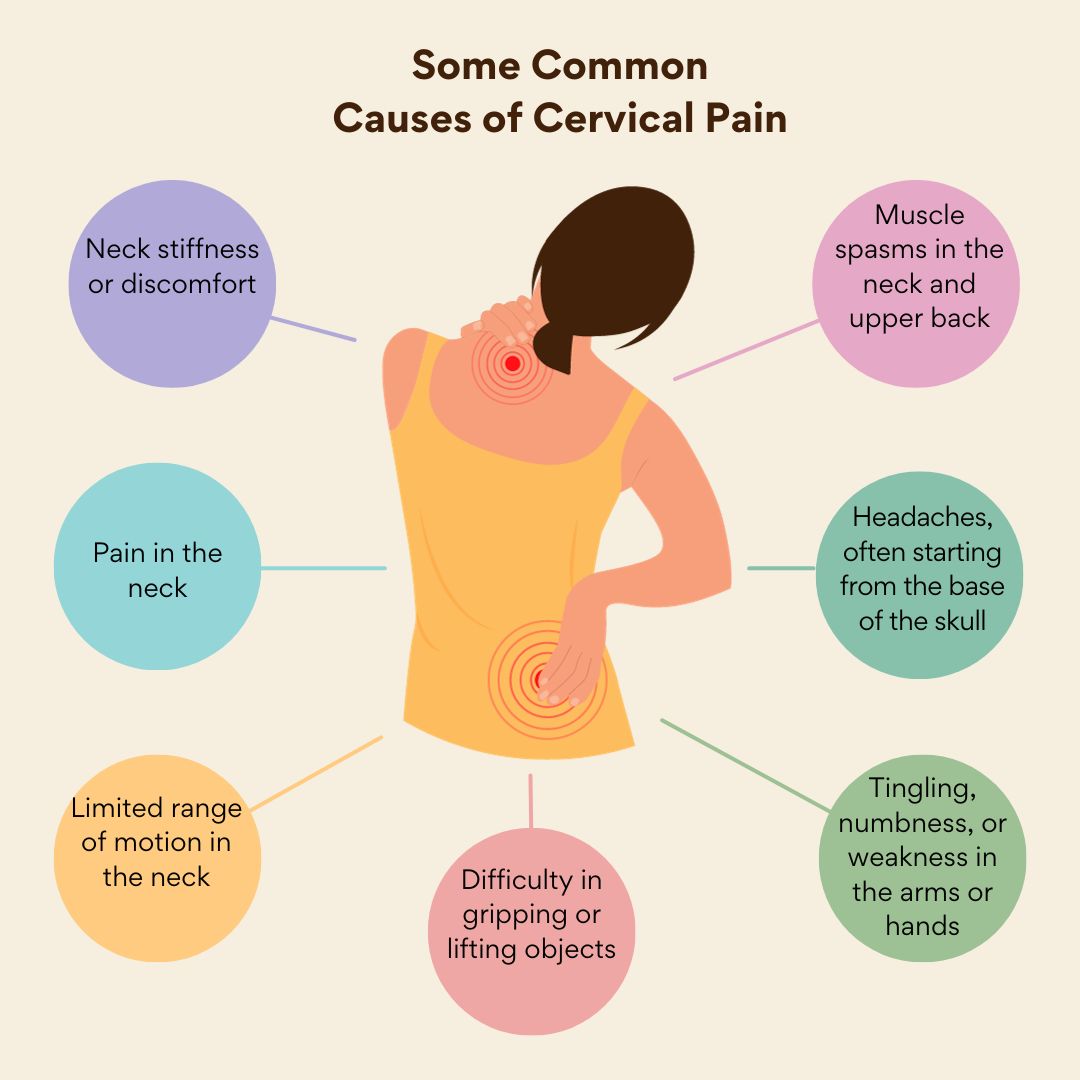
When people experience discomfort or pain in the neck region, they often refer to it as “neck pain.” However, many healthcare professionals use terms like “cervical pain” to describe conditions involving this part of the spine. Although cervical pain and neck pain are related, they aren’t always the same. Understanding the differences between the two can help with accurate diagnosis, better treatment options, and effective pain management.
Cervical Pain vs. Neck Pain: Understanding the Basics
Keywords: cervical pain vs neck pain, difference between cervical and neck pain
Both cervical pain and neck pain occur in the cervical spine, which comprises the seven vertebrae between the base of the skull and the upper back. This part of the spine is responsible for supporting the head, allowing movement, and housing nerves that supply sensation and strength to the neck, shoulders, arms, and hands.
What is Cervical Pain?
Cervical pain specifically refers to discomfort or pain originating from the cervical spine itself. The cervical spine is a complex structure with vertebrae, discs, muscles, ligaments, and nerves that can all be sources of pain. Cervical pain often includes issues such as:
- Cervical Spondylosis: Age-related degeneration that leads to stiffness and neck pain.
- Cervical Radiculopathy: Nerve irritation or compression in the cervical spine, often resulting in radiating pain to the arms and shoulders.
- Cervical Disc Herniation: When a disc bulges or herniates, it can press on nearby nerves, causing pain and other symptoms.
- Cervical Myelopathy: Compression of the spinal cord within the cervical spine, leading to pain, balance issues, and muscle weakness.
What is Neck Pain?
Neck pain, on the other hand, is a broader term that encompasses any discomfort felt in the neck region. It may or may not originate directly from the cervical spine. Neck pain can be caused by a variety of factors, including:
- Muscle Strain: Poor posture, stress, or sudden movements can strain neck muscles, leading to soreness or tightness.
- Tension Headaches: Neck tension due to stress can lead to headaches that are often mistaken for cervical issues.
- Soft Tissue Injuries: Ligament and muscle injuries, commonly known as whiplash, can cause neck pain.
- Lifestyle Factors: Prolonged use of computers, smartphones, or poor sleeping posture can strain the neck.
In general, neck pain may result from superficial muscles and ligaments, while cervical pain often involves deeper, more structural issues within the cervical spine.
Key Differences: Cervical Pain vs. Neck Pain
| Factor | Cervical Pain | Neck Pain |
| Origin | Cervical spine structure (vertebrae, discs) | Muscles, ligaments, tendons, posture |
| Cause | Degenerative diseases, disc herniation | Muscle strain, poor posture, tension |
| Symptoms | Radiating pain, numbness, weakness | Localized stiffness, muscle soreness |
| Related Conditions | Cervical spondylosis, cervical myelopathy | Tension headaches, muscle strain |
| Radiation of Pain | May radiate to shoulders, arms, hands | Generally limited to the neck area |
| Severity | Often chronic or requires medical treatment | Usually temporary, treatable with rest |
Common Symptoms of Cervical Pain
Keywords: cervical pain symptoms
Cervical pain symptoms can vary depending on the cause but often include:
- Radiating Pain: Pain that travels down the shoulders and arms.
- Numbness and Tingling: Sensations in the arms, hands, or fingers due to nerve involvement.
- Muscle Weakness: Difficulty holding or lifting objects due to nerve compression.
- Balance Issues: In severe cases like cervical myelopathy, spinal cord compression can lead to balance problems.
- Chronic Stiffness: Long-term stiffness in the neck, often seen with cervical spondylosis.
Common Symptoms of Neck Pain
Neck pain symptoms generally include:
- Local Stiffness: Soreness and stiffness in the neck area.
- Limited Range of Motion: Difficulty moving the neck side-to-side.
- Muscle Tightness: Tension or spasm in the neck muscles.
- Tenderness: The neck area may feel tender when touched.
Diagnosing Cervical Pain and Neck Pain
Since cervical pain often involves more complex conditions, healthcare providers may recommend imaging tests like MRI or CT scans to assess the cervical spine and detect issues like disc herniation, spondylosis, or myelopathy. For neck pain caused by muscle strain, a physical examination and lifestyle assessment are usually sufficient.
Treatment Options for Cervical Pain vs. Neck Pain
Treating Cervical Pain
Cervical pain may require a combination of treatments:
- Physical Therapy: Strengthens the muscles around the cervical spine.
- Medications: Anti-inflammatory drugs, muscle relaxants, and pain relievers.
- Spinal Injections: Steroid injections to reduce inflammation.
- Surgery: For severe cases, options like disc replacement or spinal fusion may be considered.
Treating Neck Pain
Neck pain, especially from muscle strain, can often be managed with simpler treatments:
- Rest and Ice/Heat Therapy: Helps reduce inflammation and relax muscles.
- Stretching and Strengthening Exercises: Gentle exercises to alleviate tension.
- Massage Therapy: Loosens tight muscles and relieves discomfort.
- Pain Relievers: Over-the-counter medications for short-term relief.
Prevention Tips
To reduce the risk of both cervical and neck pain:
- Practice Good Posture: Sit and stand with your back straight and shoulders relaxed.
- Take Breaks from Screens: Avoid “text neck” by taking regular breaks from phones and computers.
- Use Ergonomic Furniture: Support your spine properly, especially when working long hours.
- Stay Active: Regular exercise strengthens the neck, shoulders, and upper back.
Final Thoughts
While cervical pain and neck pain are interconnected, they have distinct differences in origin, symptoms, and treatments. Cervical pain typically involves structural issues within the cervical spine and may require specialized treatment, whereas neck pain is often related to lifestyle factors and muscle strain. Understanding these differences helps in choosing the appropriate care and taking preventive measures for a pain-free life.
By using targeted keywords like “cervical pain vs neck pain” and “difference between cervical and neck pain,” this blog provides valuable insights while enhancing SEO visibility for those seeking clarity on these two common types of pain.

